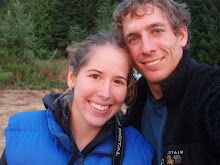Climbing well is more complex than just being strong and pulling down hard. Climbing is about being in touch with your body and understanding the style of movement required for a particular ascent. As climbers we travel for many reasons beyond the simple pursuit of cranking in new places. I enjoy the different scenery, rock texture and challenges provided by new areas. As well I am excited to climb local classics and learn a new style of movement. Traveling can allow a climber to increase their repertoire of moves as well as their fitness.
All over the world there are destination climbing areas and each has a bit of specialized style that allows a climber to excel in that area. Some skills are more easily translated between areas but others must be learned. Many people try to split climbing into three simple categories of bouldering, trad and sport each having a different style of movement. I think there are more subtle attributes to climbing than these divisions. The way a climber moves on routes at the red river gorge is very different than how they would at maple canyon, even though both are sport climbing areas. It comes down to the fact that steep cobbles provide an alternate challenge to pockets and sloping rails. Each of these styles requires different strengths and will teach climbers a specific skill.
While most areas provide a variety of hold types there are some where locals have clear advantage. Areas such as Horsepens have a very distinct style and can be very tricky for the traveling climber. Slopers the size and grain of horsepens are rare and require subtle movement and squeezing that has to be learned in order to send the local test pieces. Being able to spend many days figuring out the intricate of southern slopers will allow a climber to push themselves harder.
I have never been a true local at any climbing area. I have been a weekend warrior and sent all of my hardest climbs on road trips. Near the end of a stay at a climbing area I would have tailored my skills to fit the demands of the given rock type. Learning how to pull on the holds or how to keep the pump at bay would allow me to take the next step. Beyond just adapting to the style of the rock an extended trip would allow my body to flow better over rock. Constantly climbing for even a few days can give a climber a better awareness of how to pull and move their body.
The problem is that mentally it can be hard to climb at your limit if you keep mixing up the style you climb in. Bouldering one weekend on granite the next on sandstone and then sport climbing on limestone can put a person out of touch with how to move. A climber needs to balance variety so that they can still benefit from different challenges. It can be really annoying to switch rock types when you have finally dialed your footwork in one style. I think the key is to take something from each experience and try to apply it to the next; sometimes it will work even though other times it will be a step backwards.
When I started leading I was a sport climber and to this day I probably still am. I started trad leading a year or so later and it made convinced me that the Yosemite Decimal System could not relate bolted climbs to those where you had to place cams and nuts. There was no way I should get spanked so badly by a 5.9 crack when I could clip up 5.11.
Trad climbing came to me slowly and I started going through the grades. As I placed more gear and cam sizes became obvious I realized that it wasn’t trad climbing it self that could be more difficult but rather the type of routes that one would place gear on. Certain rock types and climbing areas lend them selves to particular types of routes. It wasn’t the gear placement that made the trad climb harder as much as the expectations of the route and the style of movement.
This past weekend, climbing out in Red Rocks, I found my self in a new situation. The end of the day yielded an onsight of both an 11a crack and an 11a face route but which had been more difficult? In recent times I have been trying to remove doubt I have had about falling while trad climbing. While I have not taken more than an eight foot fall on a cam I have been able to push my self to trust the gear more than when I first started. While I had to place gear on the crack I did this weekend I found the climb slightly easier than the face route. The jamming was slightly insecure but the line and sequence was more obvious and faster to decipher. For once it seemed that with the right mindset I could keep pushing into the next level for trad climbing.
With trad climbing and sport climbing, granite and sandstone, it is important to keep an open mind and keep learning. Don’t take bolts for granted and don’t forget how to place cams. Take each jamming experience and relate it to your latest crimpy test piece. While I believe that it may be beneficial to specialize in a style of climbing there is much more to gain from being an all around climber. It allows one to travel all over the world and climb classic routes without having to worry about bolts or hold types. Whatever way you take it go on a road trip and test your self in a new area!
- Luke
Subscribe to:
Post Comments (Atom)

No comments:
Post a Comment